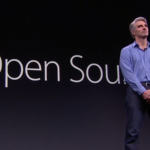OpenAI CEO Sam Altman recently made an appearance at the World Government Summit where he shed light on the company’s future AI model, GPT 5. Altman explained that GPT 5, the GPT 4 successor with an undisclosed launch date, will be “better at everything across the board.”
Going into further detail, the OpenAI chief executive who was abruptly fired and reinstated to his position as company CEO last year, said that GPT 5 will be smarter and perhaps faster and more multimodal as well. This could mean that the AI is going to get more input methods in the future.
Altman highlighted the model’s broad applicability as its most enchanting feature, suggesting it offers slight improvements across a wide array of tasks, rather than excelling in a single area. While Altman refrained from specifying a launch timeline, he has noted before the challenges in forecasting the advancements GPT-5 might bring.
More details can be found here.
Speculation is rife about GPT-5, rumored to be named “Gobi,” being a multimodal AI model. It’s anticipated to debut in the spring of 2024, currently under development with an extensive dataset. However, it is recommended to take this information with a grain of salt until there is an official confirmation from OpenAI itself.
OpenAI to Reach $2 Billion Revenue Soon
OpenAI is poised to become the fastest-growing tech company in the world as its annualized revenue has reached $2 billion. This explosive growth comes directly due to the significant traction gained by its popular AI chatbot ChatGPT.
The San Francisco-based startup achieved a noteworthy milestone in December 2023. Calculated by multiplying the revenue of the preceding month by 12, the startup’s yearly revenue run rate surged to an impressive $2 billion.
Bolstered by Microsoft’s support, its biggest investor to date, insider reports suggest a promising outlook for the company, projecting a substantial revenue surge in the coming years. Sources indicate that the company is eyeing a potential doubling of its current revenue figures by the year 2025. This optimistic forecast hinges on the increasing demand from business clients seeking to incorporate OpenAI’s sophisticated generative AI tools into their professional workflows.
This would propel OpenAI into the elite circle of tech giants within Silicon Valley such as Google and Meta.






